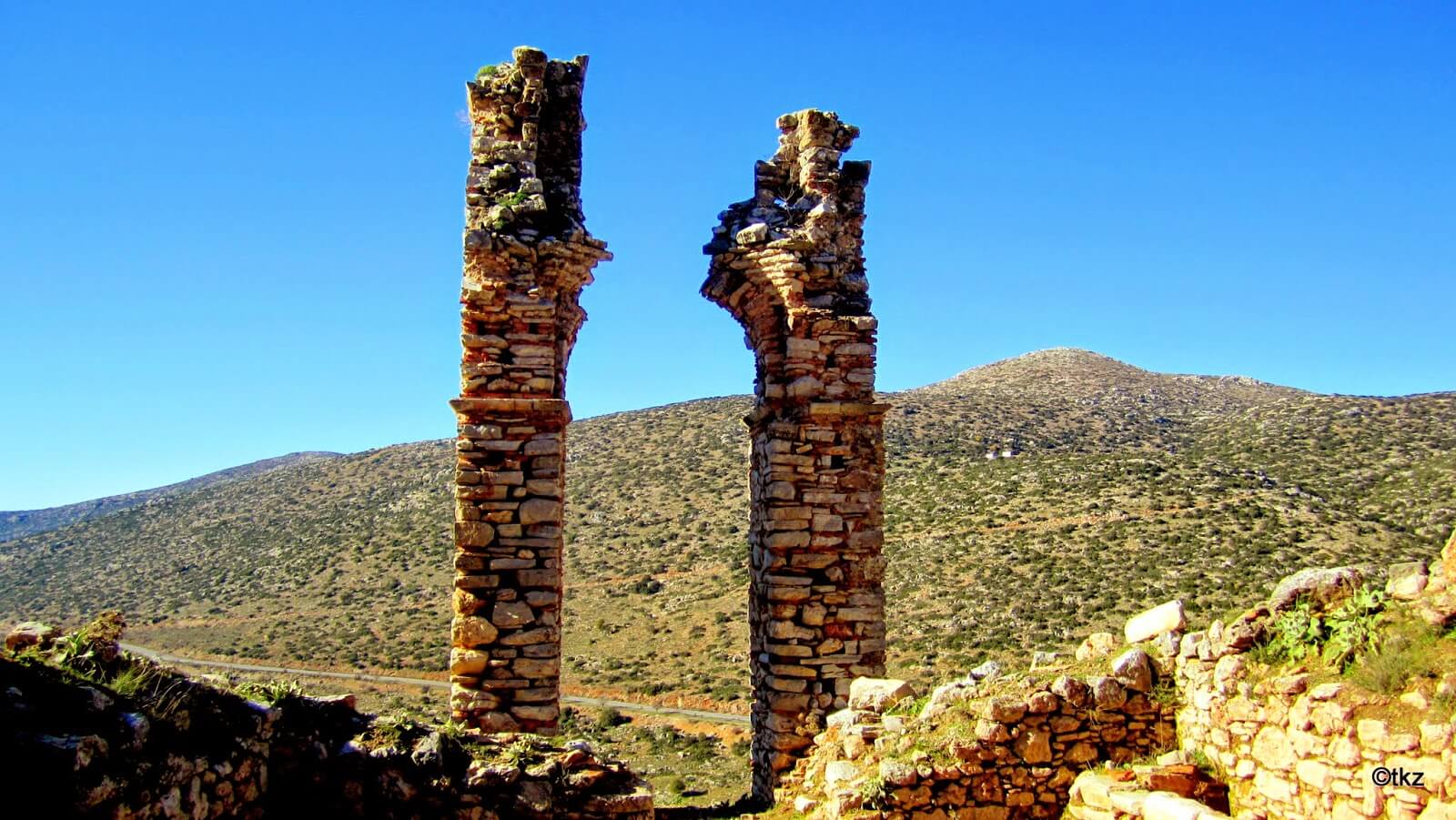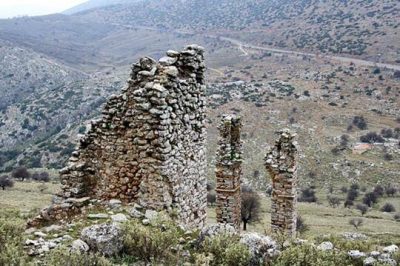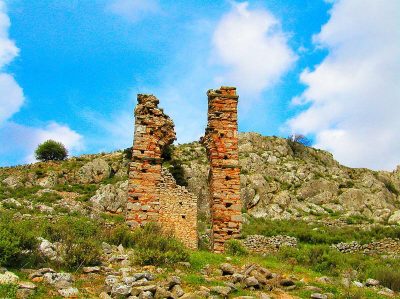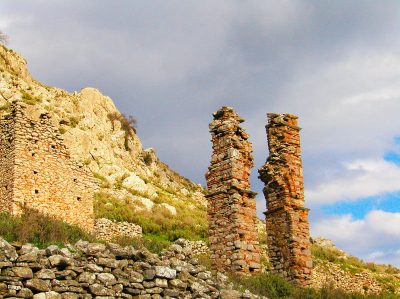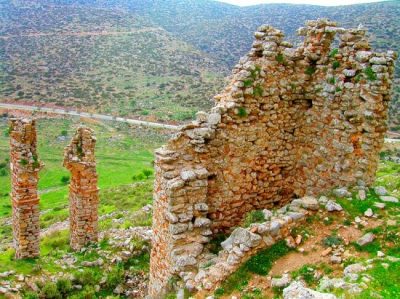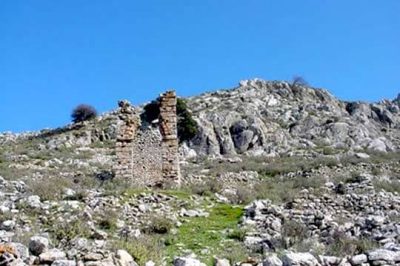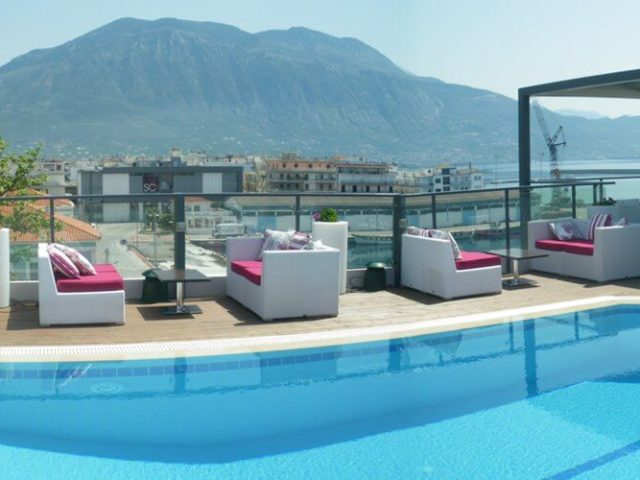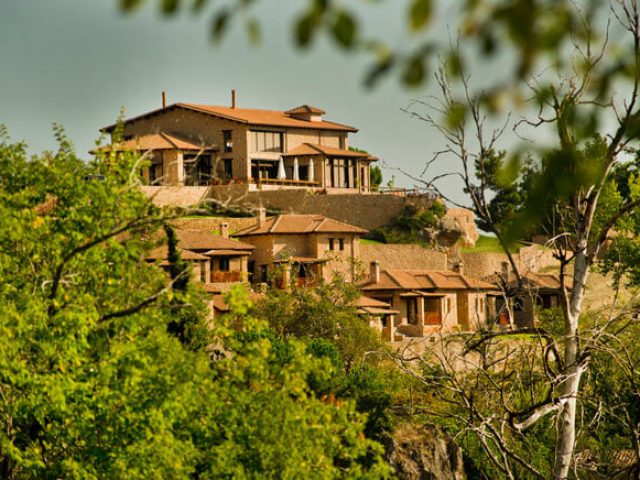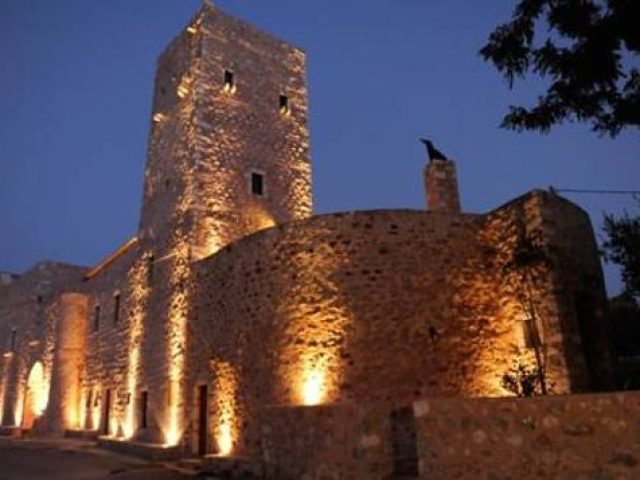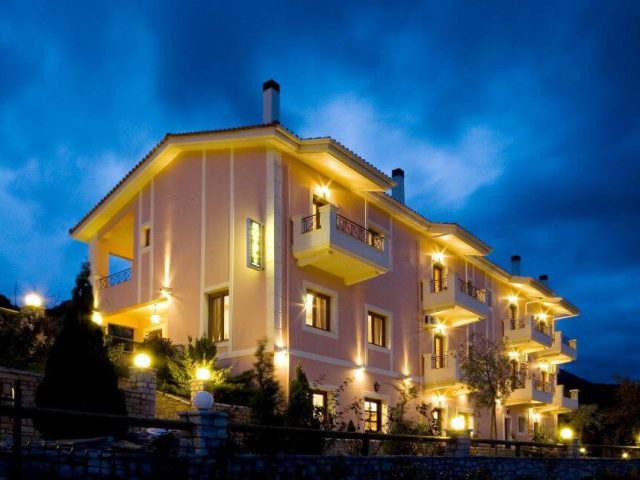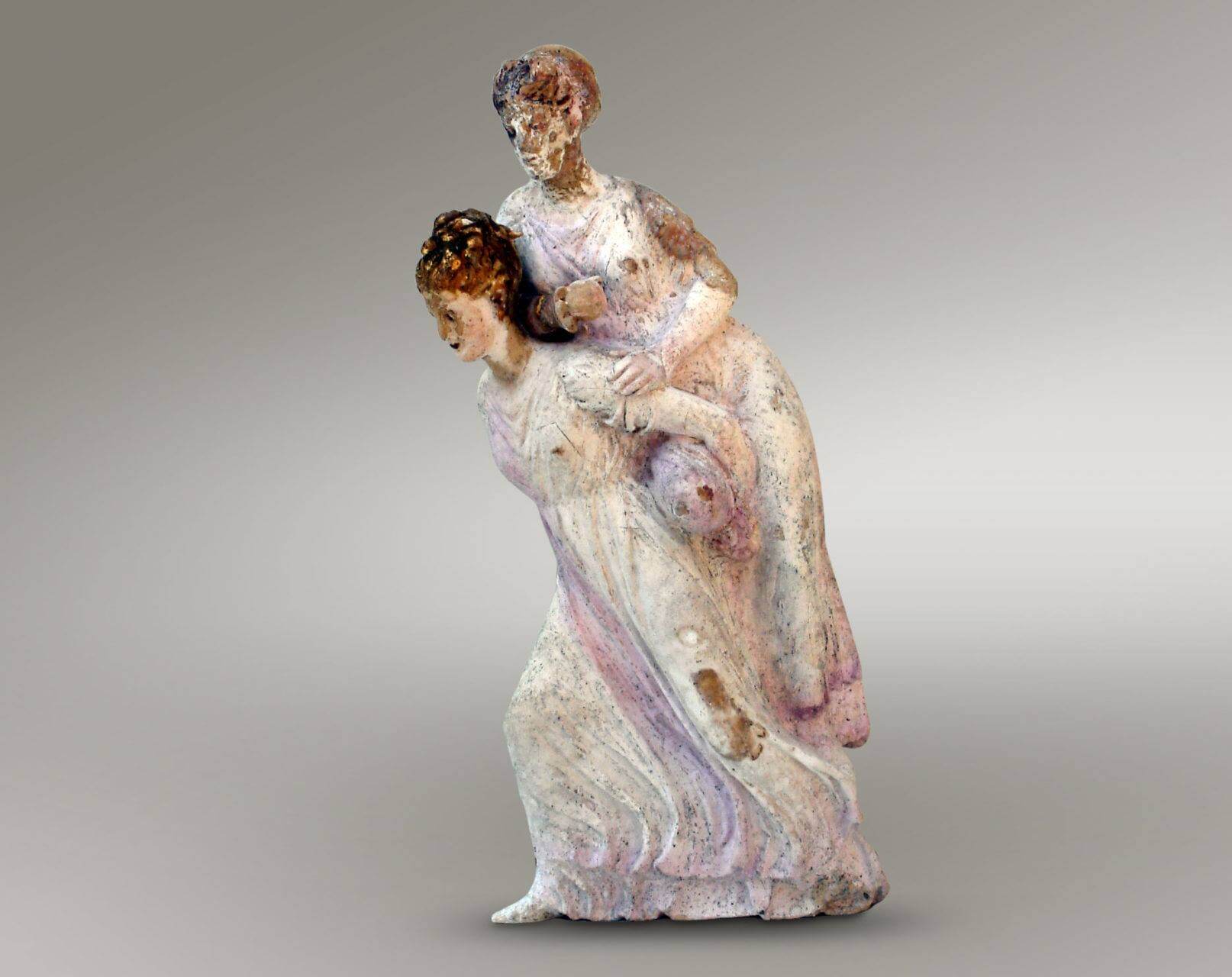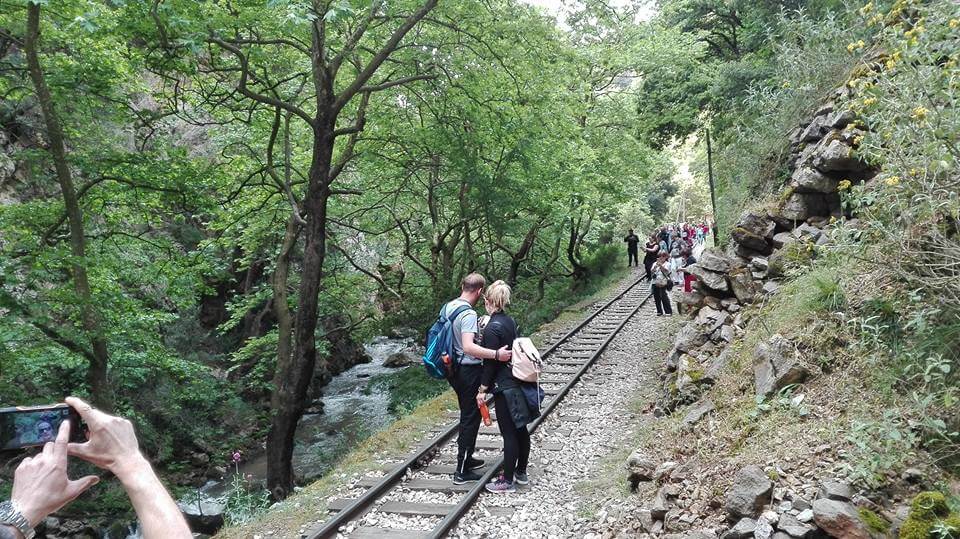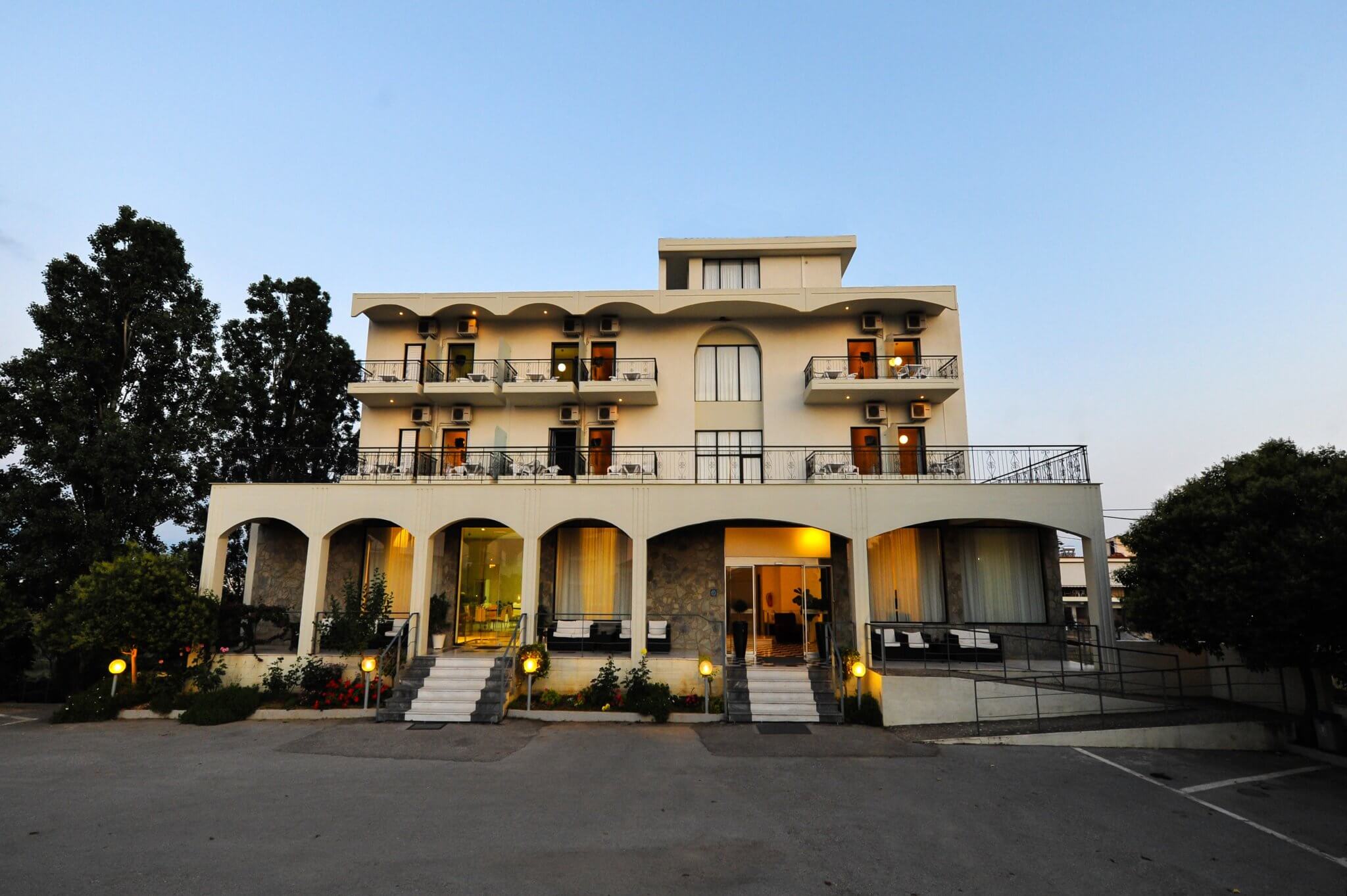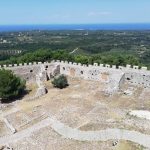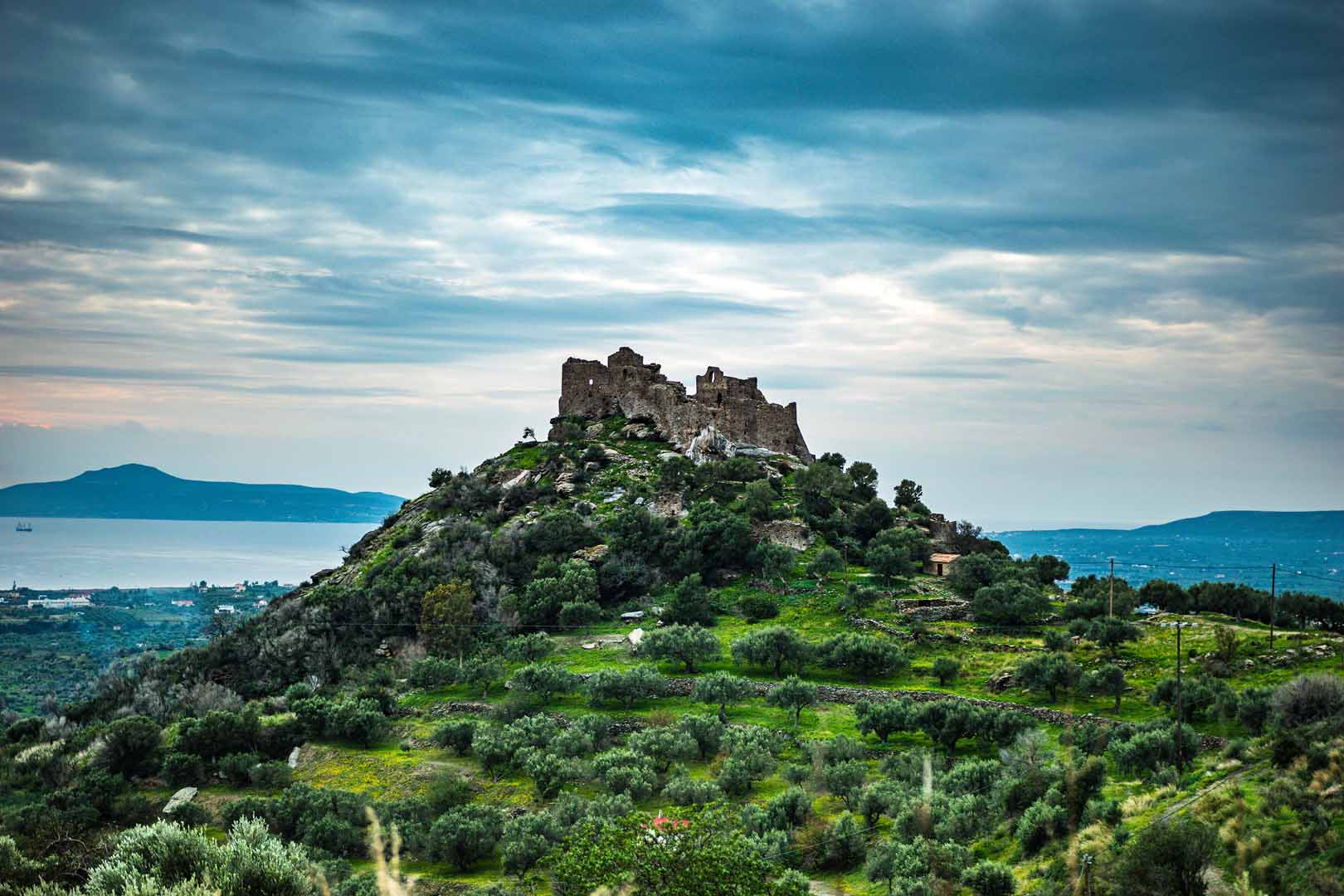Mouchli was home to the important 15th-century painter Xenos Digenis, who worked at the turning-point of the late to post-Byzantine painting. His wall frescoes are preserved in the monastery of Myrtia in Aitolia (1491), at Ag. Pateres in Epano Floria, at Selino in the prefecture of Chania, Crete (1470) and at the Assumption in Kato Meropi, Pogoni in Epirus.
Legendary too is said to have been the beauty of the daughter of the ruler of Mouchli known as Demetris Asan. She married the last Duke of Athens Francesco II Acciaioli. Later she turns up in the harem of the Sultan in Istanbul and finally married Georgios Amoiroutzis, a friend of the sultan who already had a family.
After the Turkish conquest, Mouchli was gradually abandoned by its inhabitants, who began to settle lower down, in smaller settlements among the fertile plain. The sources referred to it as (Palaio) Mouchli, Palaia Mouchla, Palaia Mochli, Mukhlu, and Mucli.
The Castle of Mouchli is one of the largest forts of Peloponnesus and was one of the most important cultural and military centers of the Byzantine army during medieval times. It is situated outside the village of Agiorgitika, on the boundaries of the prefecture of Argolida and Arcadia, on the south and southwest side of the hill of the same name. The castle flourished, but unfortunately did not avoid the wear and tear of time, lying today in ruins.
The Castle of Mouchli, one of the most important of the region of Peloponnesus, unfortunately, is not in good condition. One can reach it, however, relatively easily; and in the midst of its ruins, you can experience, however fleetingly, the grandeur of a glorious past.
Mouchli is located in the east part of Arcadia, on the border with the prefecture of the Argolid, 15 km east of Tripoli. It sits between the present-day settlements of Achladokampos to the east and Agiorgitika to the west.

